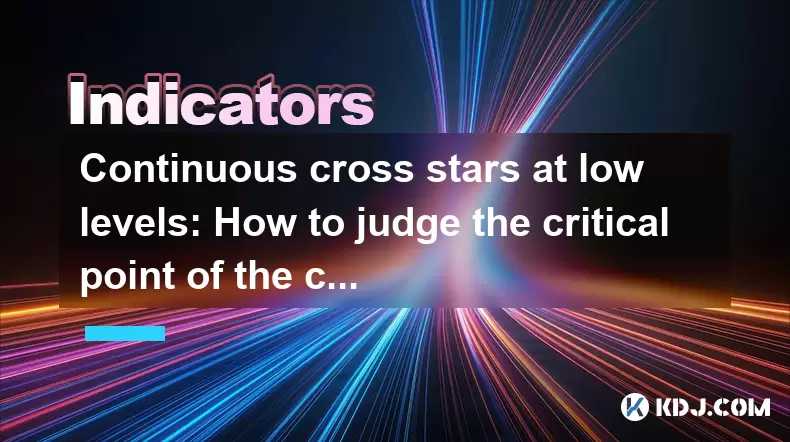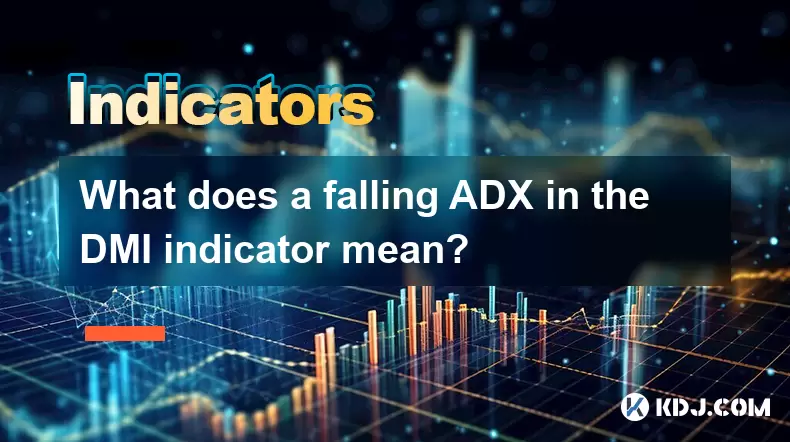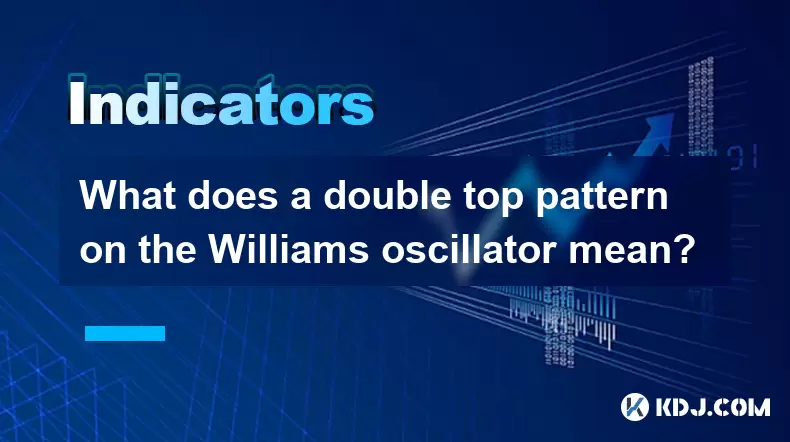-
 Bitcoin
Bitcoin $116700
0.24% -
 Ethereum
Ethereum $3973
4.34% -
 XRP
XRP $3.283
7.68% -
 Tether USDt
Tether USDt $1.000
0.01% -
 BNB
BNB $789.8
2.27% -
 Solana
Solana $176.2
3.31% -
 USDC
USDC $0.9999
0.00% -
 Dogecoin
Dogecoin $0.2238
5.14% -
 TRON
TRON $0.3389
-0.51% -
 Cardano
Cardano $0.7907
4.03% -
 Stellar
Stellar $0.4527
10.02% -
 Hyperliquid
Hyperliquid $41.07
4.27% -
 Sui
Sui $3.794
1.77% -
 Chainlink
Chainlink $19.49
10.40% -
 Bitcoin Cash
Bitcoin Cash $580.9
0.74% -
 Hedera
Hedera $0.2617
4.32% -
 Avalanche
Avalanche $23.41
3.67% -
 Ethena USDe
Ethena USDe $1.001
-0.03% -
 Litecoin
Litecoin $122.4
1.38% -
 Toncoin
Toncoin $3.364
1.49% -
 UNUS SED LEO
UNUS SED LEO $8.988
0.37% -
 Shiba Inu
Shiba Inu $0.00001295
2.82% -
 Uniswap
Uniswap $10.62
5.75% -
 Polkadot
Polkadot $3.922
4.46% -
 Dai
Dai $1.000
0.01% -
 Bitget Token
Bitget Token $4.494
2.15% -
 Monero
Monero $268.0
-1.30% -
 Cronos
Cronos $0.1523
3.68% -
 Pepe
Pepe $0.00001127
4.43% -
 Aave
Aave $285.4
4.85%
Continuous cross stars at low levels: How to judge the critical point of the change?
Continuous cross stars at low levels can signal market shifts; traders should analyze context, use technical indicators, and monitor volume and sentiment for confirmation.
Jun 01, 2025 at 03:21 pm

In the world of cryptocurrency trading, understanding the significance of continuous cross stars at low levels can be crucial for making informed decisions. These patterns, often seen on candlestick charts, can signal potential shifts in market sentiment and price direction. The critical point of change, however, requires a nuanced understanding of various factors. This article delves into how to judge this critical point, providing traders with the tools to navigate these patterns effectively.
Understanding Continuous Cross Stars
Continuous cross stars are a type of candlestick pattern that appears frequently on price charts. These stars are characterized by small bodies with long upper and lower shadows, indicating indecision in the market. When these patterns occur at low levels, they suggest that the market might be at a turning point after a downtrend. Recognizing these patterns is the first step in assessing whether a change in trend is imminent.
Analyzing Market Context
To accurately judge the critical point of change, it's essential to consider the broader market context. This includes analyzing the overall trend, volume, and other technical indicators. For instance, if continuous cross stars appear at a support level that has been tested multiple times, it might indicate a stronger likelihood of a reversal. Additionally, a sudden increase in trading volume accompanying these patterns can reinforce the potential for a change in direction.
Using Technical Indicators
Technical indicators play a vital role in confirming the signals given by continuous cross stars. Traders often use indicators like the Relative Strength Index (RSI), Moving Average Convergence Divergence (MACD), and Bollinger Bands to validate their observations. For example, if the RSI shows an oversold condition (typically below 30) and continuous cross stars appear, it might suggest that the market is ready to rebound. Similarly, if the MACD line crosses above the signal line while these patterns are present, it could be a bullish sign.
Volume Analysis
Volume is another critical factor in determining the significance of continuous cross stars at low levels. High volume during the formation of these patterns can indicate strong interest from buyers, suggesting that the market might be ready to shift from bearish to bullish. Conversely, low volume might imply that the market is still in a state of indecision, and the potential for a change is less certain. Traders should look for volume spikes as a confirmation of a potential trend reversal.
Sentiment Analysis
In addition to technical analysis, understanding market sentiment can provide further insights into the critical point of change. Tools like social media analysis, news sentiment, and sentiment indicators can help gauge the overall mood of the market. If continuous cross stars appear at low levels and are accompanied by a shift in sentiment from negative to positive, it could be a strong indicator that a reversal is on the horizon. Traders should keep an eye on sentiment shifts to complement their technical analysis.
Case Studies and Examples
Examining real-world examples can provide practical insights into how continuous cross stars at low levels can signal a critical point of change. For instance, consider a scenario where Bitcoin (BTC) has been in a downtrend for several weeks, reaching a low of $20,000. At this point, continuous cross stars begin to appear on the daily chart. If the RSI is at 25, indicating an oversold condition, and there is a noticeable increase in volume, these factors combined could suggest that a reversal is imminent. Traders who recognize these signals might consider entering long positions, anticipating a price increase.
In another example, Ethereum (ETH) might be trading at a low of $1,000 after a prolonged downtrend. Continuous cross stars form at this level, and the MACD line crosses above the signal line. Additionally, social media sentiment begins to shift positively, with more users expressing optimism about Ethereum's future. These combined factors could indicate that a critical point of change is approaching, and traders might look to capitalize on the potential uptrend.
Combining Multiple Signals
To effectively judge the critical point of change, traders should not rely on a single indicator or pattern. Instead, a holistic approach that combines continuous cross stars with technical indicators, volume analysis, and sentiment analysis can provide a more comprehensive view of the market. By integrating these elements, traders can increase their confidence in identifying the critical point where a change in trend is likely to occur.
Practical Steps for Trading
When trading based on continuous cross stars at low levels, following a systematic approach can help maximize the chances of success. Here are some practical steps to consider:
- Identify the Pattern: Start by scanning the charts for continuous cross stars at low levels. Use tools like candlestick pattern recognition software to help identify these formations quickly.
- Analyze the Context: Evaluate the broader market context, including the overall trend, previous support and resistance levels, and any upcoming events that might impact the market.
- Confirm with Indicators: Use technical indicators like RSI, MACD, and Bollinger Bands to confirm the signals given by the continuous cross stars. Look for oversold conditions, bullish crossovers, and other signs of a potential reversal.
- Check Volume: Assess the volume during the formation of the continuous cross stars. High volume can validate the pattern, while low volume might suggest caution.
- Monitor Sentiment: Use sentiment analysis tools to gauge the overall mood of the market. Positive shifts in sentiment can reinforce the potential for a trend reversal.
- Set Entry and Exit Points: Based on your analysis, determine your entry and exit points. Consider using stop-loss orders to manage risk and take-profit orders to secure gains.
- Monitor and Adjust: Continuously monitor the market and be prepared to adjust your positions as new information becomes available. Stay flexible and ready to adapt to changing conditions.
Frequently Asked Questions
Q: Can continuous cross stars at low levels be a false signal?
A: Yes, continuous cross stars at low levels can sometimes be false signals. It's important to use additional confirmation tools like technical indicators, volume analysis, and sentiment analysis to increase the reliability of these patterns.
Q: How long should I wait for confirmation before acting on continuous cross stars?
A: The timeframe for confirmation can vary depending on the specific market and the trader's strategy. Generally, waiting for at least one to two additional candlesticks after the formation of the continuous cross stars can provide more reliable signals. However, traders should also consider the broader market context and other technical indicators.
Q: Are continuous cross stars more reliable in certain cryptocurrencies?
A: The reliability of continuous cross stars can vary across different cryptocurrencies. Generally, these patterns tend to be more reliable in highly liquid markets like Bitcoin and Ethereum, where there is more trading volume and less manipulation. However, it's essential to analyze each market individually and consider other factors that might influence the reliability of these patterns.
Q: Can continuous cross stars be used for both short-term and long-term trading?
A: Yes, continuous cross stars can be used for both short-term and long-term trading. For short-term traders, these patterns can signal potential entry and exit points within a few days or weeks. For long-term traders, continuous cross stars at low levels might indicate a more significant trend reversal, which could be held for months or even years. The key is to adjust the timeframe of the analysis and confirmation tools accordingly.
Disclaimer:info@kdj.com
The information provided is not trading advice. kdj.com does not assume any responsibility for any investments made based on the information provided in this article. Cryptocurrencies are highly volatile and it is highly recommended that you invest with caution after thorough research!
If you believe that the content used on this website infringes your copyright, please contact us immediately (info@kdj.com) and we will delete it promptly.
- Roman Storm, Funding Effort, and the Looming Defense Retrial: A New York Minute on the Tornado Cash Case
- 2025-08-09 02:50:14
- Crypto's Wild Ride: XRP, Dogecoin, and the Altcoin Surge You Can't Ignore
- 2025-08-09 02:50:14
- Elon Musk, Bitcoin, and the Enduring Power of Approval: A Crypto Love Story?
- 2025-08-09 03:50:15
- Ruvi AI: The Next Big Thing After Ripple on CoinMarketCap?
- 2025-08-09 03:50:15
- Floki Price Surges: Elliott Wave and Fibonacci Setups Point to Potential Gains!
- 2025-08-09 02:30:16
- Pepe Price, RTX (Remittix?) & the $10K ETH Dream: NYC Crypto Chatter
- 2025-08-09 02:30:16
Related knowledge

What does it mean when the TRIX indicator suddenly diverges downward after a long period of convergence?
Aug 09,2025 at 12:56am
Understanding the TRIX Indicator in Cryptocurrency TradingThe TRIX indicator, or Triple Exponential Average, is a momentum oscillator used in technica...

Why is the rise limited after a MACD bottoming divergence?
Aug 09,2025 at 12:07am
Understanding MACD Bottoming Divergence in Cryptocurrency TradingThe MACD (Moving Average Convergence Divergence) is a widely used technical indicator...

What does it mean when the OBV continues to rise but the price is trading sideways?
Aug 08,2025 at 10:35pm
Understanding On-Balance Volume (OBV)On-Balance Volume (OBV) is a technical indicator that uses volume flow to predict changes in stock or cryptocurre...

What does a falling ADX in the DMI indicator mean?
Aug 09,2025 at 03:16am
Understanding the ADX and DMI Indicator FrameworkThe DMI (Directional Movement Index) is a technical analysis tool developed by J. Welles Wilder to id...

What does a double top pattern on the Williams oscillator mean?
Aug 09,2025 at 02:36am
Understanding the Williams %R OscillatorThe Williams %R oscillator is a momentum indicator developed by Larry Williams to identify overbought and over...

What is a nonce and how is it used in Proof of Work?
Aug 04,2025 at 11:50pm
Understanding the Concept of a Nonce in CryptographyA nonce is a number used only once in cryptographic communication. The term 'nonce' is derived fro...

What does it mean when the TRIX indicator suddenly diverges downward after a long period of convergence?
Aug 09,2025 at 12:56am
Understanding the TRIX Indicator in Cryptocurrency TradingThe TRIX indicator, or Triple Exponential Average, is a momentum oscillator used in technica...

Why is the rise limited after a MACD bottoming divergence?
Aug 09,2025 at 12:07am
Understanding MACD Bottoming Divergence in Cryptocurrency TradingThe MACD (Moving Average Convergence Divergence) is a widely used technical indicator...

What does it mean when the OBV continues to rise but the price is trading sideways?
Aug 08,2025 at 10:35pm
Understanding On-Balance Volume (OBV)On-Balance Volume (OBV) is a technical indicator that uses volume flow to predict changes in stock or cryptocurre...

What does a falling ADX in the DMI indicator mean?
Aug 09,2025 at 03:16am
Understanding the ADX and DMI Indicator FrameworkThe DMI (Directional Movement Index) is a technical analysis tool developed by J. Welles Wilder to id...

What does a double top pattern on the Williams oscillator mean?
Aug 09,2025 at 02:36am
Understanding the Williams %R OscillatorThe Williams %R oscillator is a momentum indicator developed by Larry Williams to identify overbought and over...

What is a nonce and how is it used in Proof of Work?
Aug 04,2025 at 11:50pm
Understanding the Concept of a Nonce in CryptographyA nonce is a number used only once in cryptographic communication. The term 'nonce' is derived fro...
See all articles

























































































